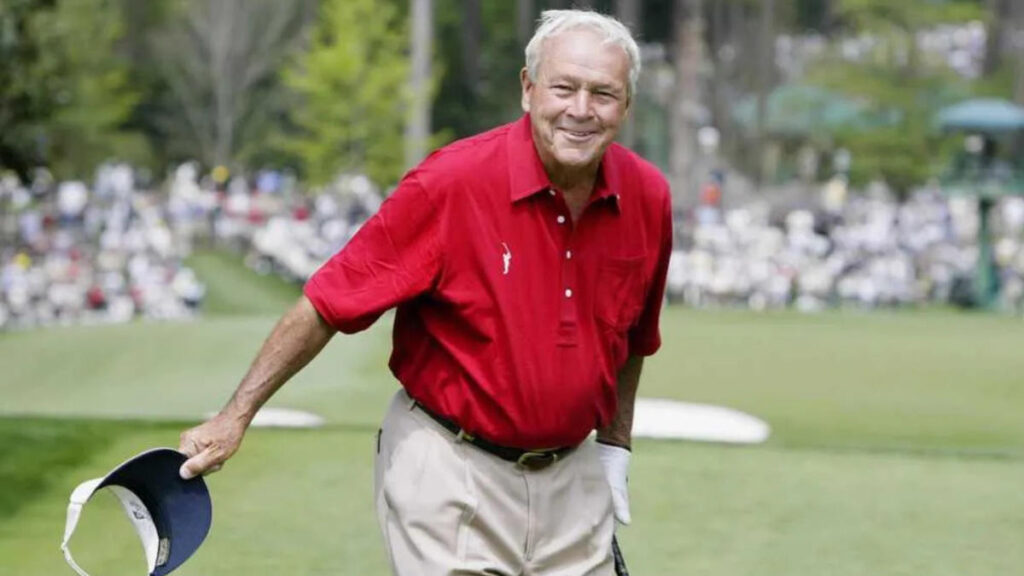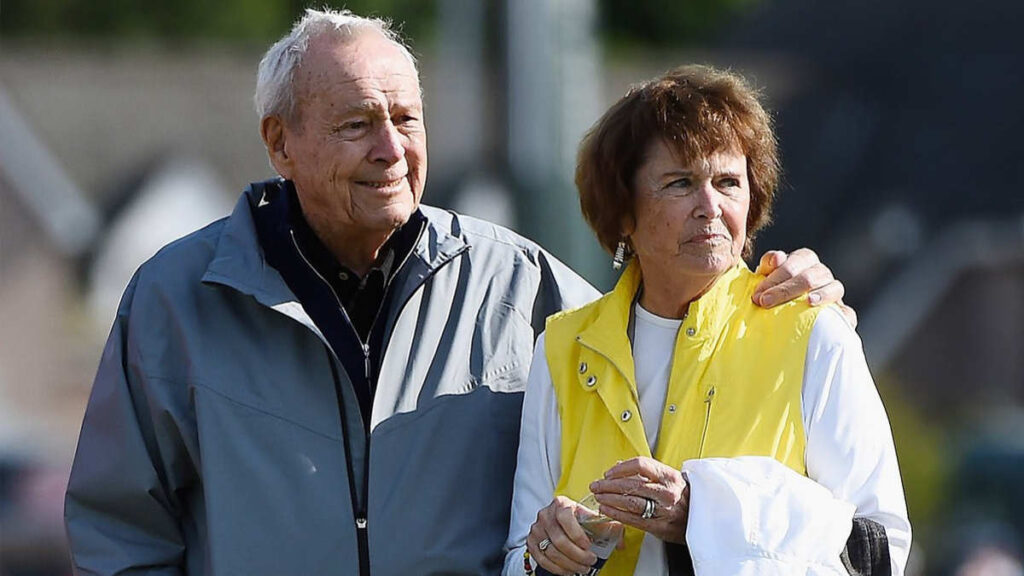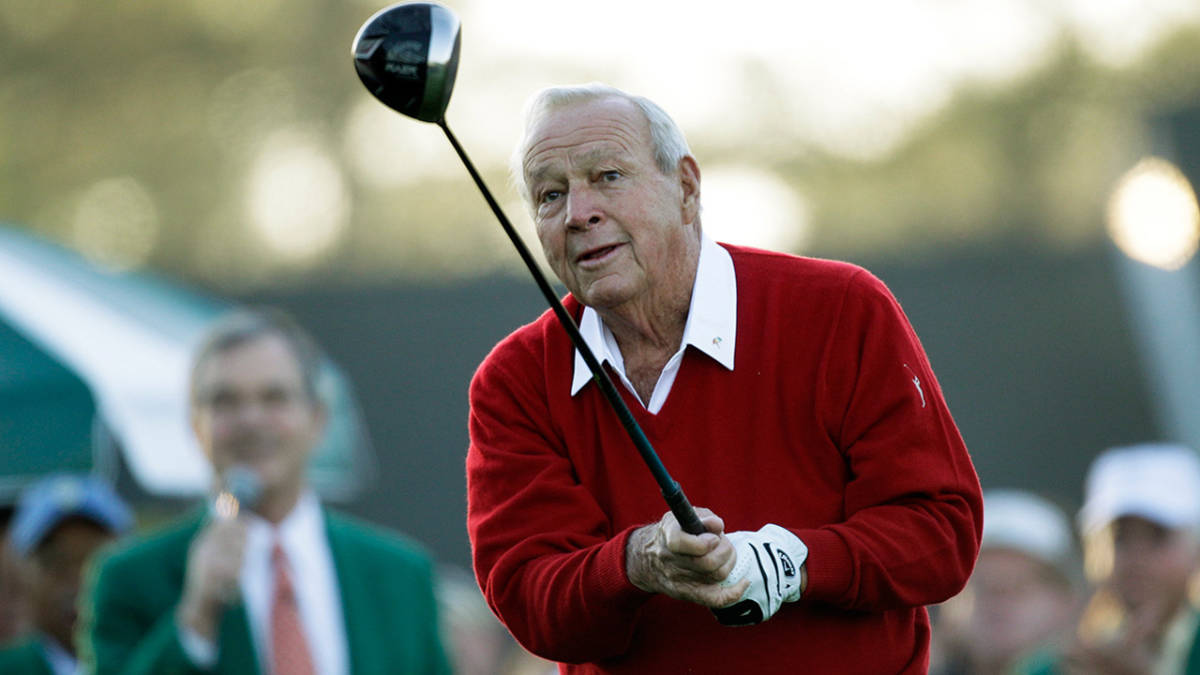As of 2025, Arnold Palmer’s net worth is estimated to hover around $875 million, a staggering figure for a man who passed away nearly a decade ago. But Palmer was never just a golfer — he was a transformative force who turned charisma and competitive grit into a personal brand that continues to generate millions in posthumous earnings. Known as “The King,” Palmer was one of the first athletes to transcend his sport, becoming a cultural icon and business mogul long before it became the norm.
His legacy endures not only through his achievements on the green — including 62 PGA Tour wins and seven major titles — but through a marketing empire built on authenticity, accessibility, and visionary partnerships. From golf course design to a wildly successful beverage line to licensing deals that keep his name in circulation, Palmer laid the groundwork for today’s athlete-entrepreneurs.
In this article, we’ll break down how Arnold Palmer built his fortune, how it continues to grow in 2025, and what his enduring success teaches us about the intersection of sports, branding, and legacy.
From Fairways to Fortune: Palmer’s Rise as a Golfing Icon
Arnold Daniel Palmer was born in 1929 in the small industrial town of Latrobe, Pennsylvania, where his father worked as the greenskeeper and later the professional at Latrobe Country Club. Raised on the course and steeped in discipline, Palmer’s blue-collar roots shaped not only his work ethic but also his deep relatability — a trait that would later make him a beloved figure far beyond the fairways.
After a standout amateur career, including a victory at the 1954 U.S. Amateur Championship, Palmer turned professional later that year. His breakout moment came with a win at the 1958 Masters Tournament, the first of his four green jackets. Over the next decade, he captured a total of seven major championships, including the U.S. Open in 1960 and back-to-back Open Championships in 1961 and 1962, bringing new international visibility to American golf.
But Palmer’s legacy wasn’t just about trophies — it was about transformation. With his aggressive playing style, good looks, and magnetic charm, he became a television sensation just as golf was beginning to appear on broadcast networks. The rise of “Arnie’s Army” — a legion of devoted fans who followed him from tournament to tournament — marked the beginning of the modern sports fandom era.
Palmer turned golf into a spectator sport for the masses, breaking the image of country club exclusivity. He didn’t just win — he connected, and that connection laid the foundation for the brand empire he would go on to build. Palmer wasn’t merely playing for titles; he was paving the fairway to a financial future few athletes at the time could imagine.
Changing the Game: Palmer’s Role in Televised Golf
In the 1950s and ’60s, Arnold Palmer didn’t just win golf tournaments — he redefined how the world experienced the game. As television sets became household staples across America, Palmer emerged as golf’s first true media star. His bold, go-for-broke playing style was tailor-made for the screen, delivering drama and emotion that drew in even casual viewers. Unlike the reserved golfers of the era, Palmer brought charisma, approachability, and visible passion — and audiences responded.
Palmer’s 1958 Masters win was one of the first golf tournaments to receive substantial TV coverage, and the timing couldn’t have been better. With every swing, grimace, and fist pump captured in living rooms nationwide, he helped transform golf from a niche sport into a televised spectacle. His dynamic presence was instrumental in driving higher viewership ratings, which in turn attracted corporate sponsors eager to tap into his growing popularity.
This surge in visibility led to a lucrative wave of endorsements — not just from golf brands, but also major consumer companies like Pennzoil, Cadillac, and Hertz. Palmer’s appeal transcended golf, and by leveraging the rising power of television, he set the stage for athletes to become mainstream marketing icons — a playbook still followed today.

Beyond the Scorecard: Turning Golf into a Global Brand
Arnold Palmer wasn’t just a pioneer on the course — he was a visionary off it. In 1960, he partnered with attorney Mark McCormack, forming a relationship that would revolutionize the business of sports. McCormack founded IMG (International Management Group) with Palmer as his first client, launching the modern era of athlete representation and marketing. Together, they understood that Palmer’s appeal extended far beyond tournament wins — it was a brand waiting to be built.
That brand quickly took shape. From apparel lines and fragrance deals to his signature “Arnold Palmer” iced tea-lemonade beverage, his name became a household product — not just a person. The drink, in particular, became a cultural phenomenon, with a licensing deal through Arizona Beverage Company generating tens of millions in royalties annually.
Palmer’s estate also licensed his image and likeness globally, capitalizing on his iconic silhouette, logo, and legacy. Long before athlete branding became standard practice, Palmer proved that a sports figure could evolve into a commercial force — creating a global brand that endures long after the last hole was played.
Also See: Top 50 Richest Golfers in the World
The Arnold Palmer Drink: From Clubhouse Quirk to Commercial Gold
What began as a simple off-menu request became one of the most recognizable beverages in America. Arnold Palmer frequently asked bartenders for a mix of iced tea and lemonade, a refreshing blend he enjoyed after rounds of golf. As fans caught wind of the drink — and began ordering “an Arnold Palmer” at their local clubhouses — it evolved from a quirky personal preference into a pop culture staple.
Recognizing its growing popularity, Palmer and his team struck a licensing deal in 2002 with Arizona Beverage Company, turning the informal concoction into a mass-market product. With Palmer’s iconic silhouette emblazoned on tall cans and bottles, the drink exploded in grocery stores and gas stations nationwide. It resonated with consumers not just for its flavor, but for the charm and nostalgia attached to Palmer’s legacy.
The deal proved incredibly lucrative. Thanks to its enduring appeal and wide distribution, the Arnold Palmer beverage line reportedly generates over $200 million in annual retail sales, with Palmer’s estate continuing to receive multi-million-dollar royalties — making it one of the most successful athlete-endorsed consumer products in history.
Palmer the Entrepreneur: Business Ventures That Outlived Him
Arnold Palmer’s business acumen extended well beyond the boundaries of the golf course. In 1972, he founded the Arnold Palmer Design Company, which went on to design over 300 golf courses in more than 25 countries. These properties not only cemented his global footprint but continue to generate revenue through licensing, consultation, and branding agreements.
Palmer also made savvy investments in automotive dealerships, private aviation, and media ventures. A licensed pilot who logged nearly 20,000 flight hours, he co-founded companies in the aviation space and was instrumental in promoting the value of private air travel for business professionals. His influence stretched to publishing and broadcast, where he often held stakes or strategic partnerships.
Even after he died in 2016, Palmer’s estate has carefully managed his image rights and business portfolio, generating millions annually. Through meticulous branding and diverse investments, Palmer built an enterprise that not only survived him — it thrives, continuing to shape industries he helped pioneer.
Golf Courses That Carry His Name and Earnings
Arnold Palmer’s passion for course design was more than a side venture — it became a cornerstone of his business legacy. Through the Arnold Palmer Design Company, he helped shape over 300 courses across five continents, with standout projects including Bay Hill Club & Lodge in Florida, The K Club in Ireland, and Tralee Golf Club. Bay Hill, in particular, remains closely tied to his name as the annual host of the Arnold Palmer Invitational, a premier PGA Tour event that continues to generate significant revenue and visibility.
Palmer’s design philosophy emphasized playability and natural beauty, favoring layouts that challenged professionals while remaining enjoyable for amateurs. These principles have made his courses highly marketable, leading to recurring income through design royalties, branding rights, and hospitality ventures.
Today, his firm’s consulting arm remains active, preserving his vision and generating revenue as courses seek to associate with his trusted name — a testament to his enduring influence in golf course architecture.
Net Worth Breakdown in 2025: Where the Money Comes From
As of 2025, Arnold Palmer’s net worth is estimated at approximately $875 million, reflecting not only his lifetime earnings but the enduring strength of his posthumous brand. Unlike many athletes whose fortunes fade after retirement or death, Palmer’s estate has continued to generate substantial revenue across multiple channels.
A significant portion comes from licensing deals and royalties, particularly from the wildly successful Arnold Palmer beverage line, which still moves hundreds of millions in annual retail sales. Image and likeness licensing, applied to apparel, golf equipment, and memorabilia, provides steady cash flow. His real estate holdings, including properties like Bay Hill, contribute both in value and hospitality income.
The Arnold Palmer estate is managed through a network of trusts and corporate entities, ensuring that revenue streams — from course design royalties to investment portfolios — are protected, taxed efficiently, and reinvested. This strategic planning has allowed his wealth not just to be preserved, but to grow, making Palmer one of the rare figures whose financial legacy remains active, diversified, and expanding years after his passing.
Timeline of Palmer’s Wealth Accumulation
Arnold Palmer’s financial journey is a case study in how sports stardom, when paired with business savvy, can build generational wealth. His rise began in the 1950s, when his charisma and skill earned him modest purses on the PGA Tour. But by 1963, Palmer had reportedly become the first golfer to earn over $1 million in career prize money, a monumental achievement at the time.
The 1970s and ’80s marked a shift from earnings on the course to off it. With the help of IMG founder Mark McCormack, Palmer secured lucrative endorsement deals with brands like Rolex, Hertz, and Pennzoil. By the 1990s, his growing beverage line and golf course design firm pushed his brand into nine-figure territory.
After he died in 2016, his estate was valued at an estimated $700 million. Strategic licensing and investment growth have pushed that figure to $875 million by 2025.
Peer Group Comparison: Palmer vs. Golf’s Other Greats
Arnold Palmer may have teed off in a different era, but when it comes to wealth and branding, he remains in elite company. Comparing his net worth to other golf legends like Jack Nicklaus, Tiger Woods, and Phil Mickelson reveals the evolution of earnings in professional golf — and underscores how Palmer’s early business decisions shaped the financial blueprint that followed.
While Palmer’s peak competitive years were in the 1950s and ’60s — when prize money was modest — his pioneering embrace of endorsements and brand-building made him the first modern athlete-entrepreneur. By 2025, his net worth of $875 million places him just behind Tiger Woods but ahead of Mickelson, with Jack Nicklaus close behind thanks to his course design empire.
Tiger Woods, still an active brand force in 2025, has surpassed $1.3 billion in lifetime earnings through Nike, TaylorMade, and his TGR ventures. Phil Mickelson, while controversial in recent years, maintains a sizable portfolio valued at around $300 million. Jack Nicklaus, like Palmer, leaned into course design and licensing, building a net worth estimated around $400 million.
Though Palmer didn’t have the same financial tools available in his era, he forged the path that allowed others to thrive. His genius wasn’t just in what he earned — it was in seeing what golf could become.

What Palmer Taught Me About Wealth and Legacy
The first time I watched Arnold Palmer swing a golf club, it wasn’t the fluidity or the form that struck me — it was the purpose. Every movement seemed to carry intent, not just to win, but to connect. Years later, as I came to understand the scope of his business empire, it became clear: Palmer approached life the same way he approached golf—with authenticity, drive, and vision.
What sets Palmer apart isn’t just the $875 million legacy or the beverage empire. It’s that he never chased money for its own sake. He pursued opportunities that aligned with who he was, and because of that, his brand felt — and still feels — genuine. Whether he was signing autographs for hours or building hospitals in his hometown, Palmer understood that wealth meant little without impact.
Modern athletes could learn a lot from him. In an age of quick contracts and flash-in-the-pan fame, Palmer’s story is a reminder that true legacy takes time and values. He didn’t just monetize his name; he protected it, expanded it, and tied it to causes he believed in.
Palmer didn’t invent athlete entrepreneurship, but he defined it with integrity. And that may be his greatest gift to the next generation: proof that you can build a fortune without ever selling out who you are.
The Arnold Palmer Foundation and His Giving Legacy
While Arnold Palmer amassed a fortune through golf and business, his deepest legacy may be the one he gave away. Through the Arnold & Winnie Palmer Foundation, Palmer focused his philanthropic efforts on children’s health, youth development, and education — causes rooted in his values and his deep connection to family and community.
One of his most visible contributions is the Arnold Palmer Hospital for Children in Orlando, Florida, a state-of-the-art facility that has helped tens of thousands of families. Alongside the Winnie Palmer Hospital for Women & Babies, the institutions reflect the couple’s commitment to nurturing life and wellness far beyond the fairway. The Foundation also supports scholarships and youth sports programs, reinforcing Palmer’s belief in opportunity through effort.
Palmer didn’t leave his giving to chance. His estate planning ensured the foundation would be well-funded and actively managed after his death. Through licensing income, trusts, and strategic endowments, the Foundation continues to grow — a living part of his brand and a driver of ongoing goodwill.
Philanthropy wasn’t an afterthought for Palmer; it was part of his identity. His generosity enhanced public trust, making his brand not just profitable but deeply respected. In a world where wealth can isolate, Palmer used his to connect — and that may be the most enduring dividend of all.
What Arnold Palmer’s Fortune Tells Us About Modern Celebrity Wealth
Arnold Palmer’s financial legacy is more than impressive — it’s instructive. Long before social media, brand collabs, and billion-dollar sneaker deals, Palmer laid the groundwork for what it means to be an athlete-entrepreneur. He didn’t wait for opportunities to find him; he built a personal brand rooted in trust, authenticity, and long-term vision.
For today’s influencers, content creators, and rising athletes, Palmer’s playbook is more relevant than ever. He proved that fame is a springboard, not a strategy. The key lies in aligning your public image with products, causes, and businesses that reflect your core identity. In Palmer’s case, it was golf, hospitality, philanthropy — and yes, a refreshing half-tea, half-lemonade drink.
His fortune, now estimated at $875 million in 2025, shows that sustainable wealth comes from consistency and integrity, not quick wins. He diversified smartly, planned carefully, and always kept the long game in mind.
Palmer’s life offers a rare example of how to blend fame with financial foresight. His brand didn’t just survive after his death — it flourished, because it was built on real values. In an age of viral trends and fleeting fame, Arnold Palmer remains proof that legacy is the most powerful currency of all.
Palmer’s Financial Legacy Is Still Swinging
Nearly a decade after his passing, Arnold Palmer’s financial legacy remains one of the most enduring in sports history. His wealth, estimated at $875 million in 2025, was built on a three-tiered foundation: elite-level golf success, savvy business ventures, and a timeless personal brand. From major championship wins to designing golf courses and partnering on a best-selling beverage line, Palmer mastered the art of turning performance into prosperity.
Yet Palmer’s story goes far beyond dollars. In 2025, his influence is still visible — in the courses that carry his name, the drinks that bear his silhouette, and the fans who still proudly wear his logo. His estate continues to generate millions annually, thanks to smart licensing deals and brand integrity that never diluted over time.
Palmer wasn’t just a golfer. He was a global brand built on humility, drive, and connection. His legacy continues to inspire not only athletes but entrepreneurs, philanthropists, and creatives of all kinds. As the business of celebrity evolves, one truth holds steady: Arnold Palmer didn’t just leave behind a fortune — he left a formula. And it’s still paying off, one generation later.
Mohit is a finance and entertainment writer specializing in celebrity wealth, brand strategy, and media empires. As Co-Founder of TheNetWorths.com, he brings over a decade of experience analyzing public income streams, endorsement deals, and the evolving creator economy.

















1 thought on “Arnold Palmer Net Worth 2025: How the Golf Icon Built a $875 Million Fortune After Death”